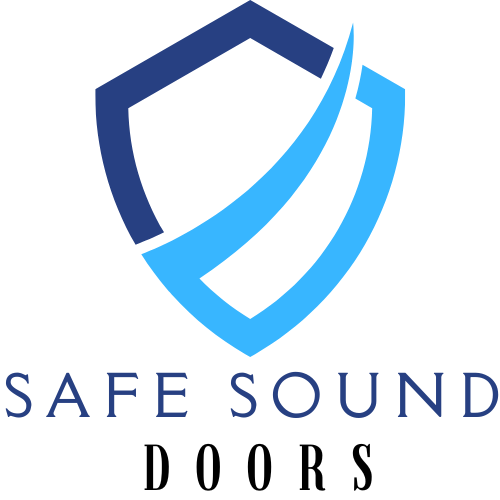Share
Hot Zones Demand Cold Silence: Choosing the Right Door for High-Risk Buildings
Estimated Reading Time: 6 minutes

🔥 What Are “Hot Zones” in Building Design?
“Hot zones” refer to areas within a building where heat, fire risk, and noise levels are significantly higher than normal. These are often:
- 🔥 Commercial kitchens with constant heat and open flames
- 🎤 Entertainment venues like nightclubs, KTV lounges, and theaters
- 🧯 Electrical and mechanical rooms housing sensitive or flammable equipment
- 🚪 Emergency exits and stairwells that must be protected in case of fire
In these environments, doors must do more than just separate rooms. They need to act as life-saving barriers against flames, heat, smoke, and sound — all at once.
🚫 Why Standard Doors Fail in High-Risk Areas
Ordinary doors may suffice in quiet residential spaces, but in high-risk zones they become liabilities. Problems with standard hollow doors include:
- 🔥 Flame penetration within 10–15 minutes during a fire
- 🔊 Sound leakage that disrupts guests or staff in adjacent rooms
- 🌡️ Heat distortion or swelling due to lack of thermal resistance
- 💨 Failure to block smoke and toxic gases during an emergency
Without proper fire and acoustic certification, these doors can void insurance coverage or cause inspection failure.
✅ Key Features of the Right Door
Doors designed for hot zones must be purpose-built and rigorously tested. Look for the following features:
- 🧱 Fire rating of 60–120 minutes under UL 10C, EN 1634, or BS 476 Part 22 standards
- 🔇 STC 35–45+ rating to block mid- and low-frequency noise
- 🪨 Fire-resistant core made of rock wool, magnesium oxide (MgO), or calcium silicate
- 🧪 Intumescent strips and smoke seals that activate under heat
- 🔩 Reinforced steel or stainless steel structure for durability under pressure
Professional-grade doors will offer both thermal insulation and acoustic performance — and have documents to prove it.
🏢 Real-World Applications for Hot Zone Doors
High-risk soundproof fire doors are essential in spaces like:
- 🏨 Hotel service corridors – Separate loud, hot kitchens from guest areas
- 🎧 KTV and nightclub entrances – Control noise while ensuring fire compliance
- 🛠️ Generator rooms or control centers – Contain emergencies and reduce operating noise
- 📦 Storage rooms with flammable materials – Prevent fire spread to public zones
- 🧯 Fire escape paths – Maintain safety under panic or smoke pressure
🧾 Certifications to Check Before You Buy
Before purchasing, always request:
- 📄 Fire test report (UL 10C, EN 1634, or local equivalent)
- 🔊 STC rating certificate from an accredited acoustic lab
- 🏷️ Permanent label on door frame indicating model and fire duration
- 📝 Installation manual and maintenance guide
📌 Warning: Vendors that avoid sharing these documents may be selling non-compliant or unsafe products.
💡 Pro Tips for Hot-Zone Buyers
To maximize safety, efficiency, and compliance:
- 🚫 Avoid MDF or PU-filled cores — they fail under heat
- ✅ Use powder-coated or stainless steel surfaces for easier cleaning and corrosion resistance
- 🧩 Choose doors with modular acoustic seals that are easy to replace
- 🔁 Implement annual inspections for commercial buildings
📈 Long-Term Value and Protection
While the upfront cost of a certified soundproof fire door may be higher, it delivers:
- 💵 Reduced insurance premiums
- ✅ Easier fire and safety inspections
- 🔇 Better working and guest environments
- 🛡️ Lower liability and legal risk
This is not just about compliance — it’s about protecting lives, equipment, and your brand.
📞 Ready to Build a Safer, Quieter Space?
At SafeSoundDoors, we design doors specifically for high-stress environments. Whether it’s a loud club or a high-heat service corridor, our products offer dual protection: certified fire resistance + advanced acoustic insulation.
🛠 Custom dimensions, seal configurations, and finishes available. Contact us to request specs or quotes tailored to your next project.
